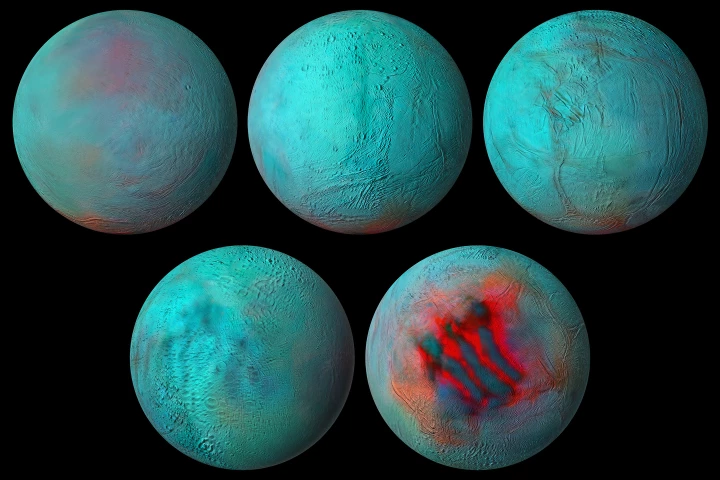Enceladus
-
Saturn’s moon Enceladus continues to climb the list of best places to look for life beyond Earth. New NASA data has detected a molecule thought to be key to the origin of life, and suggests there’s more chemical energy for life to chow down on.
-
Although Saturn's moon Enceladus and Jupiter's moon Europa both have ice-covered surfaces, oceans may exist beneath that ice. The TRIPLE-nanoAUV 2 project is aimed at getting an uncrewed submersible into those oceans, to search for life.
-
A new discovery has boosted the chances of life soon being found on another world. NASA has announced the detection of phosphorus, the rarest element that’s essential to life, in the oceans of Saturn’s moon Enceladus.
-
Saturn’s moon Enceladus is famous for its plumes that spray water into space. Now the James Webb Space Telescope has watched the biggest known plume so far, spanning thousands of miles, and studied how they feed a huge water “donut” around Saturn.
-
NASA’s Jet Propulsion Laboratory has engineered a self-propelled, autonomous robot snake designed to explore extreme extraterrestrial terrain. Its first-of-a-kind propulsion system means it can boldly go where no robot snake has gone before.
-
Subsurface oceans on moons are some of the most promising places to look for life beyond Earth. NASA is now funding a project to develop a swarm of small swimming robots that would explore these alien oceans for signs of extraterrestrial life.
-
Something is making methane on Saturn’s moon Enceladus. A new study has found that methane levels detected from the icy moon are far higher than can be explained by known geochemical processes – but they are consistent with microbes.
-
Data captured by the Cassini spacecraft has been used to create a new infrared map of Saturn's moon Enceladus. The images highlight the icy world's dramatic "Tiger Stripe" vent formation, which leads to a subsurface ocean that could play host to life.
-
Enceladus’ unique "tiger stripe" fissures have long been something of a mystery. Why do these distinctive formations only exist at Enceladus’ south pole? Why they are so evenly spaced, and why they haven’t simply closed up or frozen over?
-
Scientists have discovered a couple of new organic compounds within the icy plumes erupting from Enceladus, shedding more light on the moon's microbe-harboring potential.
-
Using data returned by the unmanned Cassini spacecraft as it made its last orbits, space scientists have captured the dynamic interaction of plasma waves moving between Saturn and its moon Enceladus and turned them into a haunting cosmic soundtrack.
-
Saturn’s moon Enceladus is one of the most promising places in the Solar System to look for extraterrestrial life. Now Cassini mission data has shown the presence of complex organic molecules, spraying up from the moon’s subsurface ocean through cracks in the icy shell.
Load More










